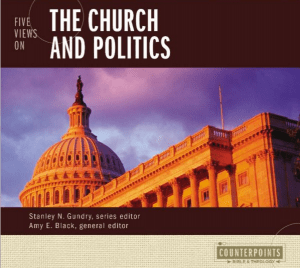 Some believe in people, some believe in government/the State, and others believe in a mixture of both. That problem was perceived already by Alexis de Tocqueville when, after visiting the USA a generation prior to the Civil War, he uttered these memorable words:
Some believe in people, some believe in government/the State, and others believe in a mixture of both. That problem was perceived already by Alexis de Tocqueville when, after visiting the USA a generation prior to the Civil War, he uttered these memorable words:
The more I see of this country the more I admit myself penetrated with this truth: that there is nothing absolute in the theoretical value of political institutions, and that their efficiency depends almost always on the original circumstances and the social condition of the people to whom they are applied.
Circumstances change, people remain largely the same, but newer groups moving into older groups will call forth changes — but at the bottom it is not theory but people that matters most. Hence, I looked for this kind of perception in Amy Black (ed.), The Church and Politics: Five Views. She sketches these views, using (what I think are mistaken) the categories of H. Richard Niebuhr (Christ and Culture) plus one (The Black Church View).
1. The Anabaptist View (Separationist) [Thomas W. Heilke]
2. The Lutheran View (Paradoxical) [Robert Benne]
3. The Black Church View (Prophetic) [Bruce Fields]
4. The Reformed View (Transformationist) [JKA Smith]
5. The Catholic View (Synthetic) [J. Brian Bennestad]
For this post I’ll ignore the categories inasmuch as they originate in an angle (Niebuhr’s transformationist and existentialist views), not in organic descriptions. E.g., to call the Anabaptist View “separationist” is to describe it, not in terms of itself, but in terms of the transformationist or synthetic or paradoxical views. But enough of that and on to the first view, the Anabaptist view, written by Thomas W. Heilke.
With a sketch of Anabaptist origins in the early part of the 16th Century in Switzerland in Zurich, Heilke begins to approach the problem of the Anabaptist political theory with this:
Michael Sattler was a prior of a Benedictine abbey before his conversion to Anabaptism, and Menno Simons was a Catholic priest. Both had received theological training. Nevertheless, neither a definitive political-philosophical treatise nor a strong tradition of articulated political thought emerged from the work of the early Anabaptist leaders. …
Anabaptists tended to focus on personal ethical behavior (“discipleship”) and a corresponding unity and purity of the community of believers. Both emphases derived from Anabaptist emphasis on the life and example of Jesus as the model for Christian behavior individually and communally, with a diminished focus on traditional political-philosophical questions of who should rule, in what manner, with regard to what ends, and why. (22)
Yes, but. To focus Anabaptists on ethical behavior of discipleship is for me getting the cart before the horse. They believe in personal faith, they believed in local church fellowship, and ethics were about how to live as part of that redeemed fellowship. Yes, indeed, when it comes to not having a political theory — but then as Heilke will note, when you are being hunted down for capital sentence you tend not to theorize. Furthermore there is an implicit political theory in all they do: and it is not the way of the Lutherans or the Reformed. Just what that was is not articulated, but it is at work all the time. Hence,
Political thought as traditionally understood is usually undertaken by people who can imagine themselves in positions of power or in positions to influence those who wield power. It has been undertaken much less often by people whose very existence is under threat and whose chances of proximity to power are nil. Both political thought and political theology are activities of reflection that require schole, or leisure, preceded in nearly all cases by the luxury of extensive education (23).
Heilke knows Anabaptist “thought” is not a system and it is amorphous and diverse. But there are common themes:
1. The first of which Heilke assumes but ignores: they were Bible-based as a movement.
2. Jesus is the central focus. [But don’t read this in light of 20th and 21st Century anabaptist stuff; read the original stuff of Sattler, Hubmaier, and Simons where you will see a Bible-drenched movement, as Pauline in theology as it was Sermon on the Mount.]
3. Their ecclesiology was believer-based and an intentional fellowship.
4. An inclination toward non-violence.
At the heart of Anabaptism was a theory of the world, at times ambiguous and frankly pragmatic and sometimes acknowledging the reality of two kingdoms, but developed out of a people who were being chased, hounded, persecuted and at best held in suspicion. So, from the most important of early documents, The Scheitheim Confession:
Now there is nothing else in the world and all creation than good or evil, believing and unbelieving, darkness and light, the world and those who are [come] out of the world, God’s temple and idols, Christ and Belial, and none will have part with the other.
In a stroke of insight, Heilke observes that this is not withdrawal and it is not quietism but antagonism against the world’s order of unbelief. Very important for understanding anabaptist political theory. Heilke explains this well: “This instability (or irresolution) of the argument arises out of the second [third above] Anabaptist distinctive—the desire to be a “visibly distinctive and unified body that functions as a concrete, alternative Christian community.” He continues:
The question that engenders the tension in the overall approach is this: How, then, do we live in the world, separate yet in it, rejecting the coercion and violence associated with governance, and “struggling]. to be separate, vulnerable, and visible Christians while at the same time civil, peaceful, and law-abiding subjects”? (31).
He explores, by assignment, how this works out in our world, and he begins with community and political economy and then on to engagement and withdrawal. The fellowships became a form of political economy. (So, “separation” misses the point; it is not separation so much as an alternative kingdom politics.) They believe, contra Augustine, in a more visible community. Thus,
Unique to the Anabaptist approach, therefore, was not the conception of either withdrawal or nonresistance, but the need to exemplify both of these practices in and from a visibly distinct community of believers over against the surrounding world. Augustine’s “Kingdom of God” was, for the Anabaptists, neither socially or socio-politically integrated into that world (37).
I have a question for you Anabaptists: How much of the Anabaptist theory of political involvement, namely, an ecclesial politics, was formed in Christendom and therefore in need of a new expression in post Christendom?











